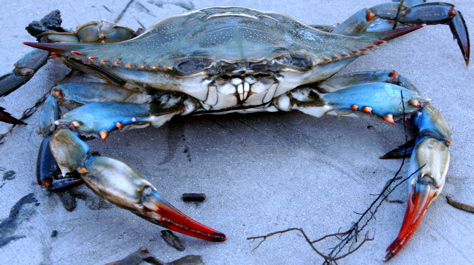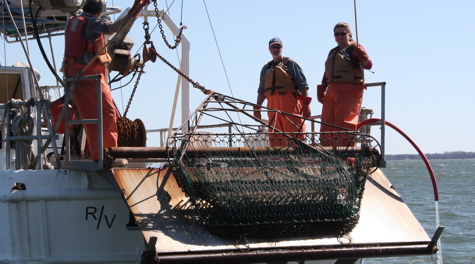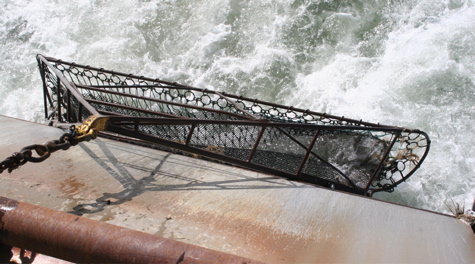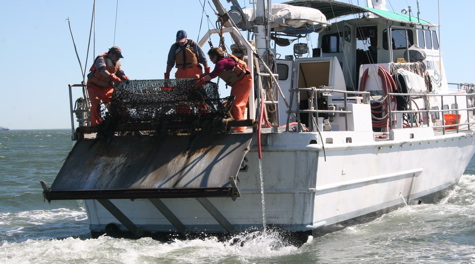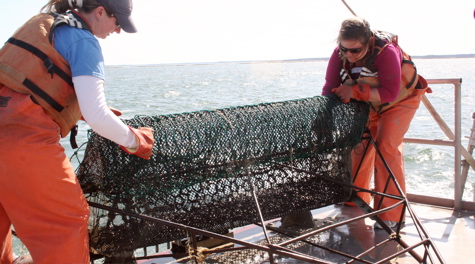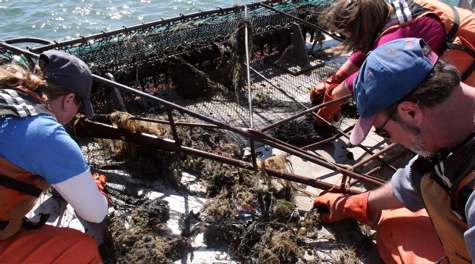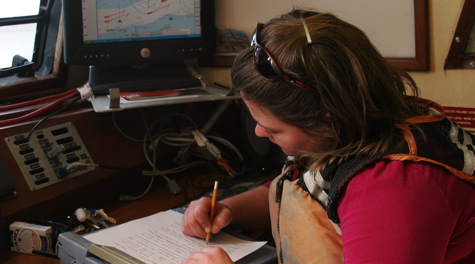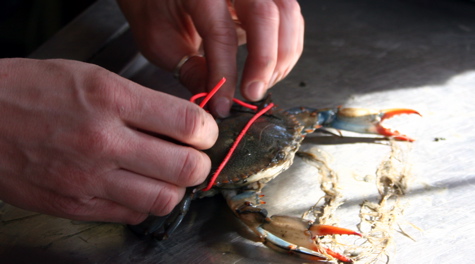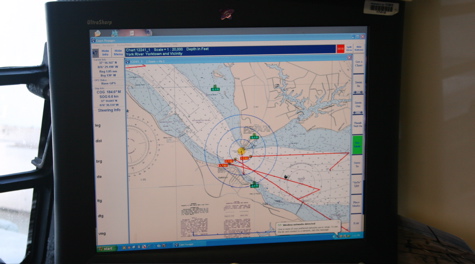Scientific survey shows dip in blue crab population
Number of spawning-age females up, but poor reproduction means fewer crabs overall
The annual scientific winter dredge survey of the bay-wide blue crab population shows a mixed bag of good and not-so-good news that may result in a slight tightening of commercial harvest restrictions.
Results of the baywide survey, conducted by the Virginia Institute of Marine Science (VIMS) and the Maryland Department of Natural Resources, show that the overall abundance of blue crabs dropped precipitously, from 765 million to 300 million crabs. This was because the number of juvenile crabs plummeted from 581 million to a mere 111 million.
Mr. Jack Travelstead, head of the Virginia Marine Resources Commission, says “This is disappointing, but it is not a disaster and not without precedent. Crab spawning naturally fluctuates and can be impacted by wind, tide, weather, and increased predation on juvenile crabs by other species. Clearly, we are in no position to expand the commercial crab harvest this year.”
The good news: While the overall crab population dropped, the number of spawning-age females increased substantially, from 95 million to 147 million, and remains well above the scientifically-established, healthy-abundance threshold of 70 million.
Adult females are the cornerstone of the joint Virginia-Maryland stock rebuilding program that began in 2008, when a fisheries management framework was established to conserve adult females because they can spawn an average of three million new crabs each brood and release about three broods per year.
“It is important to keep today’s news in perspective,” said Travelstead. “Five years ago this fishery was declared a federal disaster. That is no longer the case. Overfishing is no longer occurring. A good fisheries management framework is in place. The stock is healthy. Spawning-age females are doing well. If it wasn’t for a disappointingly small reproductive year class that showed a loss of more than 450 million baby crabs, we would have much to celebrate.”
The drop in overall crab abundance this year was not the result of overfishing. The 2012 commercial bay-wide crab harvest is estimated to be 56.1 million pounds. This is a decrease of about 11 million pounds from 2011 and is well below the safe-harvest target level.
That the harvest did not increase is a strong indication that the record-shattering number of baby crabs recorded last winter did not end up on the dinner table, as anticipated, when they reached market size late last summer.
One possible factor that may have prevented last year’s juveniles from fully materializing in the 2012 harvest was an unusually large influx of juvenile red drum (known as puppy drum) into warm Bay waters last summer that may have feasted on baby crabs. In fact, Virginia’s recreational anglers last year caught and released an astounding 2.5 million puppy drum, a vast increase from the 61,000 that were reported caught and released in 2011 and the 28,000 reported in 2010, according to the federal Marine Recreational Information Program.
VIMS Professor Rom Lipcius says “There is a good chance that these fish had an impact on last year’s record year class. Puppy drum are opportunistic feeders and will target high density food sources, and juvenile crabs last year were found in high densities. I was expecting a reduced number of juvenile crabs this year. Lower spawning stock numbers in 2012 may have combined with environmental factors to dampen reproduction this year.”
Maryland estimates its 2012 red drum harvest to be nearly 300,000 fish, as compared to less than 3,000 a year in 2010 and 2011. Red drum are not as prevalent in northern Bay waters.
Harvest restrictions
In light of the substantial drop in overall blue crab abundance due to a poor reproductive year, the three jurisdictions that manage crabs in the Bay and its tributaries—Virginia, Maryland and the Potomac River Fisheries Commission—agree harvest restrictions of approximately 10% are necessary this year.
The Virginia Marine Resources Commission will consider returning the female crab season closure to Nov. 21, from last year’s Dec. 15 closure. The survey results appear to preclude the reopening of Virginia’s blue crab winter dredge fishery, which has been closed since 2008.
One conservation measure already implemented for the 2013 crab season is a daily bushel limit that is expected to reduce Virginia’s harvest. This will be the first time in Virginia’s history that yearlong daily bushel limits will restrict a harvester’s catch. The limits vary from 27-55 bushels a day, depending on how many crab pots a license holder is permitted.
Maryland will examine shortening its crab season and adjusting daily bushel limits to achieve the necessary harvest reduction.
The Potomac River Fisheries Commission will consider enacting daily bushel limits and an expanded mid-season closure for the harvest of female crabs.
“The results of this year’s winter dredge survey are by no means ideal, however, our strong management framework includes a buffer that allows the population to fluctuate within a safe threshold,” said John Griffin, Secretary of Maryland’s Department of Natural Resources. “In fact, the conservation measures we first put into place in 2008 were designed to allow for the naturally occurring fluctuations crabs are known for and ensure a sustainable seafood industry.”
Conducted annually by VIMS and the Maryland Department of Natural Resources since 1990, the winter dredge survey employs crab dredges to sample blue crabs at 1,500 sites throughout the Chesapeake Bay from December through March. By sampling during winter when blue crabs are buried in the mud and stationary, scientists can develop, with good precision, estimates of the number of crabs present in the Bay.

